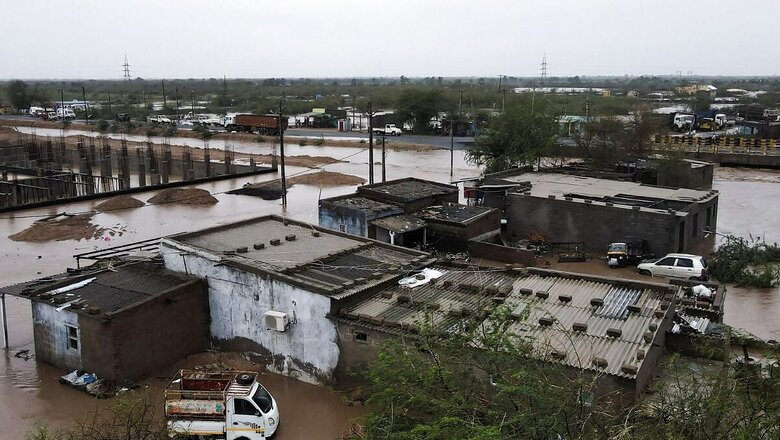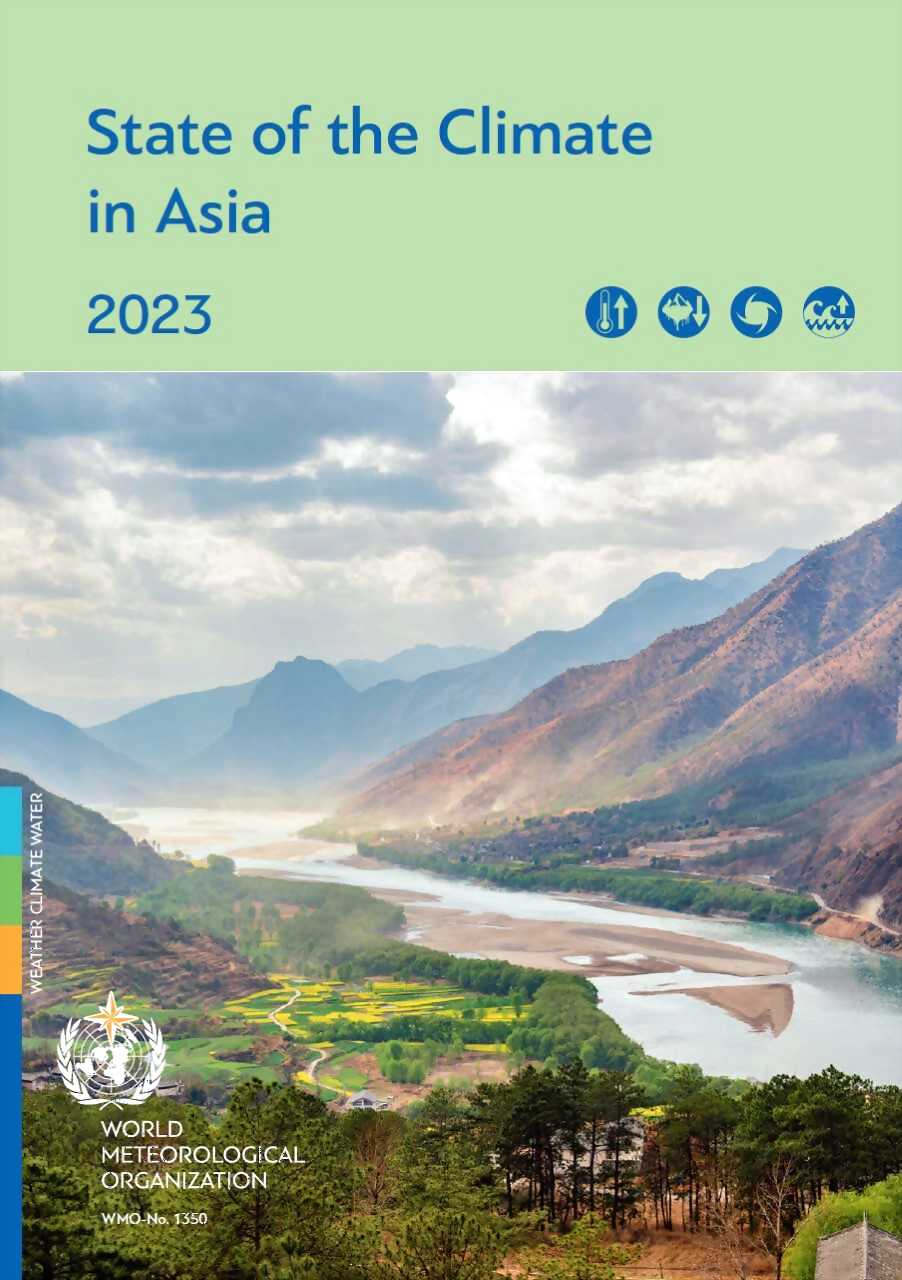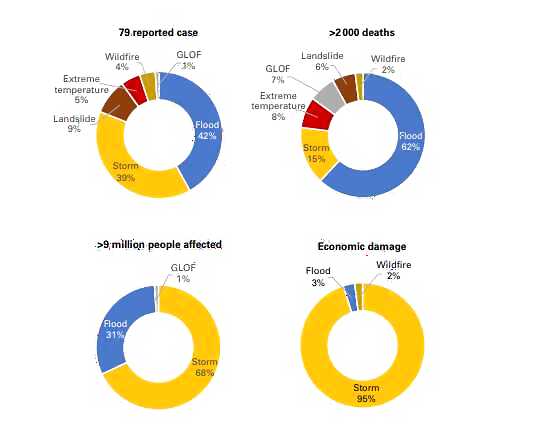In Asia, Devastating Floods Claimed Most Lives in 2023; WMO Report Sounds Alarm Over Extreme Weather

views
Devastating floods claimed the maximum number of lives across Asia, as compared to any other extreme weather event, said the World Meteorological Organization in its ‘State of the Climate in Asia 2023’. A high number of fatalities were reported from countries, including India, Yemen and Pakistan.

According to the report, while floods accounted for 60 per cent of the total fatalities, intense storms affected the largest number of people and caused the most economic damage in 2023. Overall, more than nine million people were directly affected by these disaster events across the continent.
For India, 2023 was the second-warmest year on record with prolonged heat waves, deficient monsoon and, at the same time, devastating floods up north in July. Despite these extreme weather events increasing in intensity, frequency and duration due to global warming, only 60 per cent (12) of the Asian countries are covered by early warning systems, the report stated.

Extreme heat becoming more severe
The report said Asia is the world’s most disaster-prone region. The continent with the largest land mass, has warmed faster than the global land and ocean average.
This means that the temperature increase over land is even larger than the temperature increase over the ocean. Overall, a warming of nearly 0.91 degrees Celsius was recorded in Asia last year, above the 1991-2020 reference period.
The year had unusually prolonged heat waves impacting large parts of India in April and June, leading to 110 deaths due to heatstroke. This was followed by the driest and warmest August since 1901.
The rainfall deficit crossed 36 per cent, at a crucial time when farmers count on monsoon rains to irrigate their crops. For the second consecutive year, the Ganges catchment and the lower course of the Brahmaputra received less than normal rainfall last year.
“The report highlights the profound vulnerabilities of the region to the escalating threats of climate change. Developing countries in Asia bear the brunt of climate-related adversities without adequate means to combat foreseeable disasters. International solidarity and financial support from wealthier nations are imperative to empower these countries to build resilience and respond effectively to inequitable climate impacts,” said climate activist Harjeet Singh, who is the global engagement director of the Fossil Fuel Non-Proliferation Treaty Initiative.
Increasing risk to coastal areas
The World Meteorological Organization (WMO) said rising temperatures have led global mean sea levels to increase by nearly 4.77 mm per year between 2014 and 2023 – reaching a new record high in 2023 – when the ocean heat content was the highest on record. This could have long-ranging repercussions for all the low-lying coastal areas along India’s 7,500-km coastline, which also faces the threat of intense cyclones.
The North Indian Ocean witnessed six tropical cyclones in 2023, as compared to 5.4 cyclones per year, each with maximum sustained wind speeds of (greater than or equal to) 63 kmph. Four out of the six cyclones formed over the Bay of Bengal (Mocha, Hamoon, Midhili and Michaung), and two formed over the Arabian Sea (Biparjoy and Tej). Cyclone ‘Michaung’, which made landfall in southern Andhra Pradesh on December 5 claimed 22 lives.
In fact, the ocean warming has been noted to be particularly strong – more than three times faster than the global mean upper-ocean warming rate – in the North-Western Arabian Sea.
“As the waters of the Indian Ocean warm, it supplies more heat and moisture for weather systems to intensify. The number of cyclones in the Arabian Sea has increased by 50% during the last four decades, and more extremely severe cyclones like ‘Tauktae’ and ‘Amphan’ are projected to form in the future. The monsoon that sources its energy and moisture from the Indian Ocean has become more erratic, with short spells of heavy rains and long dry periods, causing floods and dry seasons in the same season,” said Roxy Mathew Koll, senior scientist at the Indian Institute for Tropical Meteorology (IITM) in Pune.
Decreasing snow cover, melting glaciers
The report further stated that the extent of snow cover over Asia from March to May has also shown a decreasing trend of 2.5 lakh sqkm per decade. It cites the glacial lake outburst floods (GLOF) in Sikkim’s South Lhonak last October, and highlighted that such disasters are increasingly observed because of climate change-induced glacier retreat. Glacial lakes formed by retreating glaciers, exemplified by the reduced expanse of South Lhonak lake, pose threats that span across regions in Bhutan, India, Nepal and Pakistan.
Overall, a total of 3,612 disasters have been attributed to weather, climate and water extreme events across Asia from 1970 to 2021, which have led to 9.8 lakh deaths and economic losses worth $1.4 trillion (based on the analysis of data from the international disaster database, EM-DAT).
Between 1970 and 2021, the region accounted for 47 per cent of all reported deaths worldwide, with tropical cyclones being the leading cause. But, over the years, the number of casualties due to tropical storms have significantly dropped due to better forecasting skills.
Stay Ahead With all the Lok Sabha Election 2024 Related Real-Time Updates At News18 Website.


















Comments
0 comment